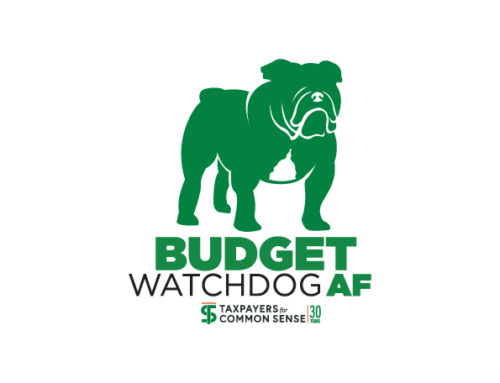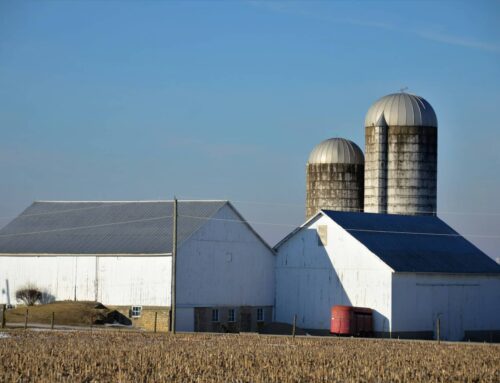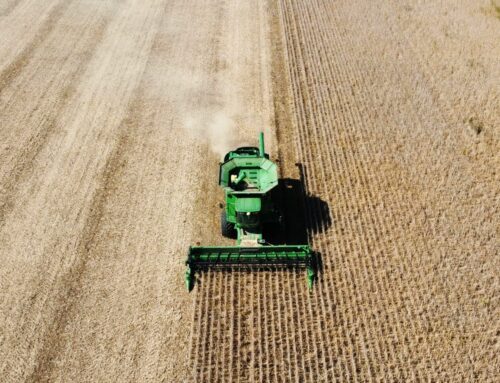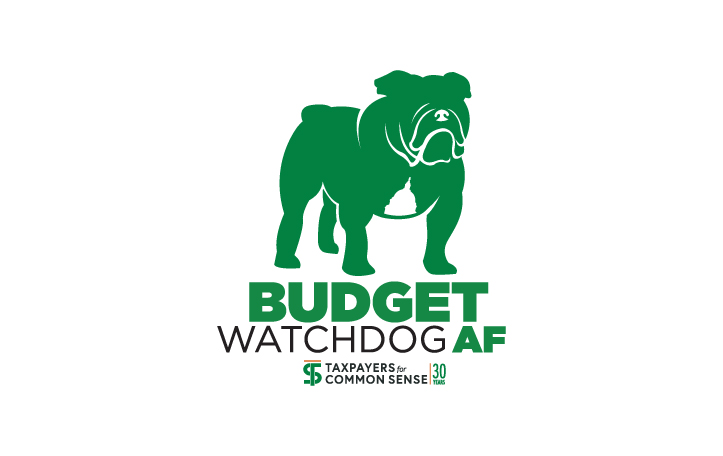The House Agriculture Committee released their draft legislation to implement Fiscal Year 2025 budget reconciliation instructions on Monday May 12. Instructed to produce legislation reducing deficits by no less than $230 billion, a Congressional Budget Office analysis was not available prior to the scheduled markup of the legislation. Preliminary estimates from the committee and other sources claim the bill produces Nutrition program changes totaling more than $290 billion in spending reductions, with $60 billion in increased costs for farm subsidy programs.
An initial analysis of the bill’s provisions is below. Additional details and cost estimates will be added as they are made available.
Subtitle A – Nutrition
SEC. 10001. THRIFTY FOOD PLAN (TFP)
- Would allow reevaluation every five years for the cost of food within nutrition programs but require no cost increases other than those tied to the Consumer Price Index (CPI) and considerations for Alaskans, Hawaiians and US territories. Percentage multiplier adjustment higher for smaller households and lower per-person for larger households. Added requirement for public notice and comment of future TFP updates.
SEC. 10002. ABLE BODIED ADULTS WITHOUT DEPENDENTS WORK REQUIREMENTS WITHIN SUPPLEMENTAL NUTRITION ASSISTANCE PROGRAM (SNAP)
- Exemption from work requirements for individuals raised to those over age 65. Current law exempts individuals over age of 55.
- Adds work requirements for individuals with dependents over age 6, a change from current policy which allows individuals with dependents (17 and under) to be exempt from the work requirement. Exception is a married individual with dependent child age 7 or older whose spouse meets work eligibility requirements.
- Changes exemption for “homeless individual” to state “currently homeless.”
- Starting October 1, 2030, broad based work requirement exemptions are eliminated for individuals that are currently homeless; a veteran; and adults 18-24 years old who were in foster care when they turned 18.
SEC. 10003. ABLE BODIED ADULTS WITHOUT DEPENDENTS WAIVERS
- Narrows state’s ability to exempt SNAP work eligibility requirements. Bases determinations on county unemployment rates (10% or higher) instead of broader area unemployment rates as is current law.
- Drops the percentage of individuals who can qualify for work requirement waivers within a state from up to 8 percent of those eligible down to no more than 1 percent.
SEC. 10004. AVAILABILITY OF STANDARD UTILITY ALLOWANCES BASED ON RECEIPT OF ENERGY ASSISTANCE
- When calculating SNAP benefits a “standard utility allowance” is often used to represent utility costs instead of requiring applicants document their actual month-by-month costs. Households qualify for this allowance if they receive at least $20 per-year in Low Income Home Energy Assistance Program (LIHEAP) payments. This section changes the LIHEAP based qualification to only apply to households with an elderly or disabled member, instead of current law which provides broader eligibility for other households.
SEC. 10005. RESTRICTIONS ON INTERNET EXPENSES
- Certain internet expenditures would not be able to be deducted from SNAP income eligibility requirements.
SEC. 10006. MATCHING FUNDS REQUIREMENTS
- Beginning in Fiscal Year 2028, this would reduce federal government’s share of SNAP costs, pushing a greater percentage of costs onto states over time. Greater state cost burden for states with higher payment error rates (both over and under payments).
- States with error rates below 6 percent = 5 percent of the cost of SNAP benefits
- States with error rates between 6-8 percent = 15 percent of the cost
- States with error rates between 8-10 percent = 20 percent of the cost
- States with error rates over 10 percent = 25 percent of the cost
SEC. 10007. ADMINISTRATIVE COST SHARING
- States would be responsible for 75% of costs of administering SNAP, up from 50% currently.
SEC. 10008. GENERAL WORK REQUIREMENT AGE
- Modifies work requirement ages from current law of ages 16-59 to proposed 18-64.
- Would not require individuals with a dependent child under age 7 to work, a change from current law of under age 6.
SEC. 10009. NATIONAL ACCURACY CLEARINGHOUSE
- States are currently required to use the USDA established “National Accuracy Clearinghouse” to determine if an individual applying for SNAP benefits has applied for or is already receiving SNAP benefits in another state. This is intended to reduce unintentional duplication (or fraud).
- This bill adds a requirement that any time a SNAP recipient applies for benefits in a new state, or the clearinghouse flags a potential duplicate payment, that the state look for duplicate payments in other state-run federally funded benefit programs.
SEC. 10010. QUALITY CONTROL ZERO TOLERANCE
- When determining the payment error rate in SNAP, small errors in payments are excluded. “Small” is determined by a formula and is $57 for 2025.
- This provision requires payment errors of any amount above $0 be included.
SEC. 10011. NATIONAL EDUCATION AND OBESITY PREVENTION GRANT PROGRAM REPEALER
- Section removed.
SEC. 10012. ALIEN SNAP ELIGIBILITY
- Limits SNAP eligibility to U.S. citizens and permanent residents. It would remove SNAP eligibility for otherwise eligible, lawfully abiding individuals who entered the US prior to June 30, 1948, individuals whom the Attorney General withheld deportation, individuals seeking asylum, and any other category.
SEC. 10013. EMERGENCY FOOD ASSISTANCE
- Extends program funding allocations through FY31, with current law providing for expiration in FY24 (with funds available through the end of the next Fiscal Year).
Subtitle B—Investment in Rural America
SEC. 10101. SAFETY NET
Commodity Programs
- Government-set reference prices
- Would increase price floors for certain crops (known as “reference prices”), used to calculate Price Loss Coverage (PLC) farm subsidies. The most highly subsidized crops are included in the table below, but the bill would increase reference prices for other crops as well, including barley, milo/sorghum, oats, seed cotton, dry peas, chickpeas, lentils, and other oilseeds. Price increases would range from 11% for corn to 21% for rice. Would provide for additional increases after crop year 2031, with a cap of 115% of the amounts in the table below.
|
Reference price increases |
Wheat (per bushel) |
Corn (per bushel) |
Soybeans (per bushel) |
Rice (per hundredweight) |
Peanuts |
|
New government-set price |
$6.35 |
$4.10 |
$10.00 |
$16.90 |
$630 |
|
Current law |
$5.50 |
$3.70 |
$8.40 |
$14 |
$535 |
|
% Increase |
16% |
11% |
19% |
21% |
18% |
- Farm commodity subsidy eligibility
- Would extend the prohibition on subsidy payments for otherwise subsidy-eligible acres planted to grass or pasture through the 2031 crop year.
-
- Provide for an increase of up to 30 million additional “base acres,” or land eligible for taxpayer-provided farm subsidies. 30 million acres is the equivalent of more than one-third of US corn acreage, one of the US’s largest crops by acreage. Minimum base acre additions of 15% of all acres utilized for hay, grazing, harvest, silage (ground hay or corn plants, for example), or prevented planting during 2019 through 2023 crop years, on average.
- Extends PLC and Agriculture Risk Coverage (ARC) farm subsidy program election for producers through crop year 2031.
- Price Loss Coverage (PLC) program
- Extends PLC government-set crop price subsidies through the 2031 crop year.
- Agriculture Risk Coverage (ARC) program
- Extends ARC subsidy payments, known as “shallow loss” payments that kick in when expected revenue dips slightly from prior years, through the 2031 crop year.
- Increases the subsidy payment rate from a minimum of 10% to 12.5% of benchmark revenue (price times yield for the relevant county).
- Subsidy Caps
- Would add additional entities exempt from payment caps in Title I farm bill commodity programs to include partnerships, S corporations, LLCs, and a joint venture or general partnership.
- Would increase the amount of subsidies individual crop producers can receive from commodity programs each year, from $125,000 per year to $155,000 per year. This increase of nearly 25% would also apply separately to peanut producers, who could receive up to $310,000 in taxpayer subsidies annually ($155,000 for peanuts + $155,000 for all other commodities), just from one government program. This is nearly 4x the real median US household income and approximately 4x the former direct payment subsidy cap for peanuts plus other crops.
- Payment limit of $155,000 will increase annually based on the Consumer Price Index for All Urban Consumers.
- Farm Subsidies for Millionaires and Billionaires
-
- Eliminates the eligibility cap of $900,000 adjusted gross income (AGI) to qualify for payments in Title 1 livestock and crop disaster programs, as well as Title II Conservation programs, for certain farm operations.
-
- Applies to any individual or entity that earned more than 75% of their income from farming, ranching, and similar activities. This includes income from agritourism, direct-to-consumer sales, the sale of agricultural equipment, and “other agriculture-related activities” as defined by the Secretary of Agriculture.
- Programs that no longer have income limits include: Livestock Indemnity Program (LIP), Tree Assistance Program (TAP), Emergency Assistance for Livestock, Honeybees, and Farm-Raised Fish (ELAP), Livestock Forage Program (LFP), and the Noninsured Crop Disaster Assistance Program.
- Marketing Loans
- Extends the program through 2031.
- Nonrecourse Marketing Assistance Loans
- Extends recent loan amounts through 2025 & increases loan amounts for 2026 through 2031 crop years.
- Cotton Storage Costs
-
- Provisions extended through 2025 and 2031.
- Loan Deficiency Payments
-
- Extended through 2031.
- Trade and Marketing Promotion for Cotton
-
- Extends through 2032.
- Commodity Recourse Loans
-
- For high moisture corn, cotton, and contaminated commodities, special interest carve-outs extended through 2031.
- Economic adjustment payments for cotton textile mills
-
- Increase in subsidy rate from 3 cents per pound to 5 cents per pound, beginning on August 1, 2025.
- Loans for domestically grown sugarcane and sugar beet processors
-
- Increase from 19.75 cents per pound for raw cane sugar in 2023 (extended for 2024 as well) to 24 cents per pound from 2025 to 2031, an increase of 21.5%.
-
- Increase in loan rate for sugar beet processors through 2031 as well.
- Commodity Credit Corporation storage payments for forfeited sugar
-
- Significant increases for refined sugar, from 15 cents per hundredweight to 34 cents per hundredweight (increase of 127%) in 2025 and beyond, in addition to raw cane sugar, from 10 cents per hundredweight to 27 cents per hundredweight (increase of 170%) in 2025 and beyond.
- Sugar marketing allotments
-
- Extended through 2031.
- Sugar study completed one year after enactment & subsequent regulations
-
- Examine the need for “establishing a standard for color- or reflectance-based units for refined sugar such as those utilized by the International Commission of Uniform Methods of Sugar Analysis…,” among other factors. US Department of Agriculture would be allowed to issue regulations regarding sugar imports after issuance of the study.
- Dairy Margin Coverage subsidies
-
- Changes eligibility thresholds allowing for lower premiums for larger producers and extends the program through 2031.
- Agricultural Adjustment Act of 1938 suspension
-
- Suspends permanent price supports from the 1930s.
- Administrative costs for Farm Service Agency
-
- Administrative costs provided for allowing producers to sign subsidy agreements online and providing for new technologies for data sharing.
- Livestock Indemnity Payments
-
- Increase payment rate to 100%, from current 75%, of market value of affected livestock, with 75% payment rate for losses due to adverse weather or disease. Additional payment for unborn livestock, with varying multipliers for different types of livestock (higher multiplier for swine with no multiplier for cattle, horses, and bison).
- Livestock forage disaster program
-
- Would increase the number of monthly payments eligible producers may receive and provide subsidy payments when drought, for instance, is less severe than in years prior.
- Emergency Assistance for Livestock, Honey Bees, and Farm-Raised Fish
-
- Would add subsidies for fish losses due to bird predators (known as “piscivorous birds”), an issue raised by Mississippi representatives in the past. Payment of at least $600 per acre of farm-raised fish.
- Tree Assistance Program
-
- Extends eligibility to all tree losses caused by natural disasters (current law requires losses in excess of 15% of “normal mortality”).
-
- Increases payment rate for rehabilitation/pruning costs from 50% to 65%.
- Emergency Assistance for Honeybees
-
- Would allow payments for honeybee colony losses of 15% or more.
Crop Insurance
- Beginning farmer and veteran provisions eligibility and premium subsidy changes
-
- Change definition of beginning farmer from one who has been farming for less than 5 years to less than 10 years, which provides higher subsidies for crop insurance premiums.
-
- Similarly changes the definition of a beginning veteran farmer or rancher to one who has not farmed or ranched for more than 10 years.
-
- 15% higher premium subsidy for beginning farmers and ranchers and veteran farmer and ranchers in first two reinsurance years of enrollment in crop insurance. In the 3rd year, the percentage is 13%. The 4th year percentage is 11%. For the 5th to 10th years, the percentage is 10%. Current law is 10%.
- Crop insurance coverage levels
-
- Would increase the coverage level for subsidized crop insurance, to 90% for individual coverage aggregated across multiple crop commodities.
- Supplemental Coverage Option (SCO) shallow loss crop insurance program
-
- Deductible for highly subsidized revenue program would decrease from 14% to 10%.
- Increase crop insurance premium subsidies
-
- Increase already overly generous premium subsidy levels, anywhere from 3-5%, resulting in federal taxpayers covering 69% of crop insurance premiums for producers enrolling in coverage levels of 55-65%, for instance.
- Expansion in administrative and operating (A&O) subsidies for private crop insurance companies
-
- Allow an additional payment to crop insurance companies, equal to 6% of the net book premium.
-
- A&O subsidies to private crop insurance companies writing specialty crop (fruit and vegetable) policies to be at least 17% of the premium, higher than industry averages.
-
- Changes to A&O subsidies should not be considered to be a renegotiation of the Standard Reinsurance Agreement (SRA).
-
- Inflation increases in A&O subsidies for private insurance companies, similar to current policy.
- Crop insurance data mining funding
-
- Increased spending of $6 million per year beginning in FY26 and each year thereafter.
- New crop insurance policy funding
-
- Beginning in FY26, funding for approval of new crop insurance policies (funded by taxpayer subsidies) to increase to $10 million per year, up from $7 million in prior years.
- Poultry insurance pilot program
-
- “Pilot program under which contract poultry growers, including growers of broilers and laying hens, may elect to receive index-based insurance from extreme weather-related risk resulting in increased utility costs…” Bill then calls for the pilot program to be approved for taxpayer subsidy eligibility within two years from completion of the evaluation.
SEC. 10102. CONSERVATION
- Grassroots Source Water Protection Program
-
- Extends discretionary funding (optional, provided by annual appropriations process) and provides $1 million of mandatory funding in FY26 to remain available until expended.
- Voluntary Public Access and Habitat Incentive Program
-
- $10 million in mandatory funding each year from FY25-31, the same amount provided in FY24.
- Feral Swine Eradication and Control Pilot Program
-
- Mandatory funding of $15 million for each year FY25-31.
- Agricultural Conservation Easement Program
-
- Increase from $450 million for each FY25-31 in current law (not including IRA funding) to:
-
-
- $625 million in FY26
-
-
-
- $650 million in FY27
-
-
-
- $675 million in FY28
-
-
-
- $700 million in FY29
-
-
-
- $700 million in FY30
-
-
-
- $700 million in FY31
-
- Environmental Quality Incentives Program (EQIP)
-
- Increase from $2.025 billion for each year FY25-31 in current law (not including IRA funding) to:
-
-
- $2.655 billion in FY26
-
-
-
- $2.855 billion in FY27
-
-
-
- $3.255 billion each year from FY28-31
-
- Conservation Stewardship Program (CSP)
-
- Increase from $1 billion for each year FY25-31 in current law (not including IRA funding) to:
-
-
- $1.3 billion in FY26
-
-
-
- $1.325 billion in FY27
-
-
-
- $1.35 billion in FY28
-
-
-
- $1.375 billion each year from FY29-31
-
- Regional Conservation Partnership Program (RCPP)
-
- Increase from $300 million each year FY25-31 in mandatory funding in current law (not including IRA funding) to:
-
- $425 million in FY26
-
- $450 million each year from FY27-31
- Watershed Protection and Flood Prevention
-
- Increase from $50 million each year in mandatory funding to $150 million per year in mandatory funding, beginning in FY26 and each year thereafter.
- [TCS note: total of program funding increases in ACEP through RCPP listed above total $10.705 billion from FY26-31].
- Rescinding unobligated IRA conservation funding
-
- Assume provision will prevent FY26 funding from being allocated, including the following amounts, totaling $7.95 billion (and possibly more from years prior):
-
-
- FY26 EQIP funding of $3.45 billion
-
-
-
- FY26 CSP funding of $1.5 billion
-
-
-
- FY26 ACEP funding of $600 million
-
-
-
- FY26 RCPP funding of $2.4 billion
-
Trade
- Market Access Program (MAP)
-
- Double trade promotion funding from $200 million to $400 million for each year FY26-31.
- Foreign Market Development Cooperator Program
-
- Double funding from $34.5 million to $69 million for each year FY26-31.
- E (Kika) De La Garza Emerging Markets Program
-
- $8 million for each year FY26-31.
- Priority trade fund
-
- $3.5 million for each year FY26-31.
SEC. 10104. RESEARCH
- Urban, indoor, and other emerging agricultural production research, education, and extension initiative
-
- $2 million per year in mandatory funding FY24-31, same as previous levels.
- Foundation for Food and Agriculture Research
-
- $37 million to remain available until expended
- Scholarships for Students at 1890 Institutions
-
- $60 million in FY26 funding to remain available until expended
- Assistive technology program for farmers with disabilities
-
- $8 million to remain available until expended
- Specialty Crop Research Initiative
-
- $80 million for FY25 and $175 million for FY26 in mandatory funding
- Research Facilities Act
-
- Mandatory funding of $125 million each year beginning in FY26.
SEC. 10105. SECURE RURAL SCHOOLS; FORESTRY
- Secure payments for States containing Federal land
-
- Extends program through 2026
- Other forestry program extensions and repeals
SEC. 10106. ENERGY
- Biobased Markets Program
-
- Mandatory funding of $3 million per year extended from FY25 to FY31.
- Bioenergy Program for Advanced Biofuels
-
- $7 million in mandatory funding per year through FY31.
SEC. 10107. HORTICULTURE
- Funding for Plant Pest and Disease Management and Disaster Prevention, Specialty Crop Block Grants, Organic Production and Market Data Initiative, Modernization and Improvement of International Trade Technology Systems and Data Collection Funding, National Organic Certification Cost-Share Program, Multiple Crop and Pesticide Use Survey
SEC. 10108. MISCELLANEOUS
- Funding for Animal Disease Prevention and Management, Sheep Production and Marketing Grant Program, Pima Agriculture Cotton Trust Fund, Agriculture Wool Apparel Manufacturers Trust Fund, Wool Research and Promotion, Emergency Citrus Disease Research and Development Trust Fund
- Photo by Cyrus Crossan on Unsplash










